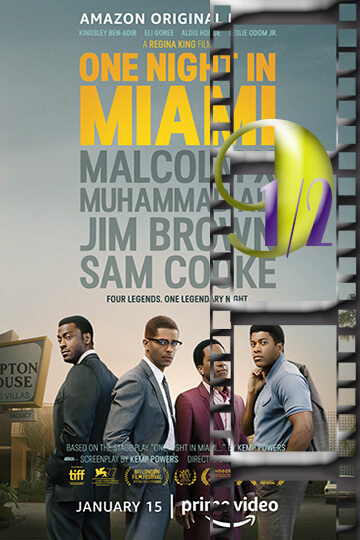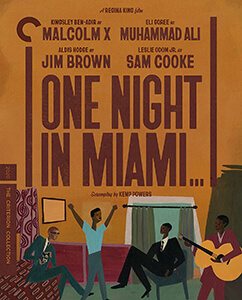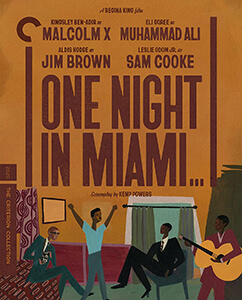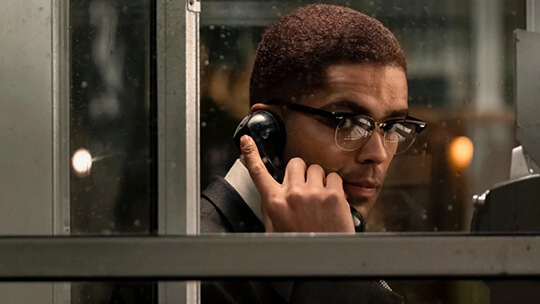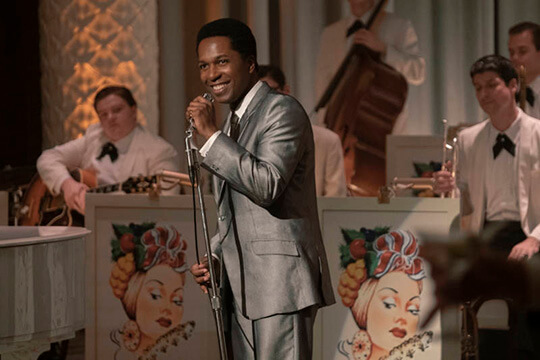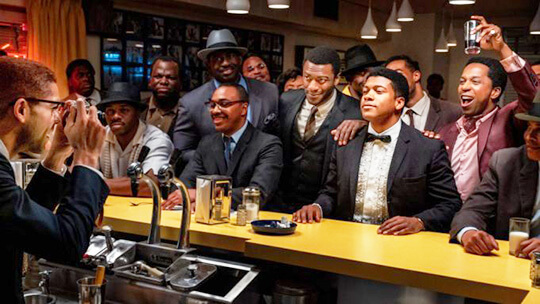What’s It About
Set on the night of February 25, 1964, “One Night in Miami” follows a young, brash Cassius Clay as he emerges from the Miami Beach Convention Center the new Heavyweight Boxing Champion of the World. Against all odds, he defeated Sonny Liston and shocked the sports world. While crowds of people swarm Miami Beach to celebrate the match, Clay – unable to stay on the island because of Jim Crow-era segregation laws – spends the evening at the Hampton House Motel in Miami’s African American Overtown neighborhood celebrating with three of his closest friends: Malcolm X, Sam Cooke, and Jim Brown. During this historic evening, these icons, who each were the very representation of the Pre-Black Power Movement and felt the social pressure their cross-over celebrity brought, shared their thoughts with each other about their responsibilities as influencers, standing up, defending their rights and moving the country forward to equality and empowerment for all black people. The next morning, the four men emerge determined to define a new world for themselves and their community.
MOVIESinMO REVIEW
Who would have ever thought that a movie based on actual events containing four iconic Black men, combined with their fictional meeting in Miami, could be so inspiring? One Night in Miami opens with snippets from each protagonist’s “native” environment. We first see Cassius Clay in the boxing ring. Then comes Sam Cooke at the Copacabana. Next is Jim Brown on his way to see a family friend, Mr. Carlton, in Brown’s hometown, St. Simmons, Georgia. Lastly, there’s Malcolm X, seen on TV by his family giving a speech. He’s the one that wanted this meeting because he felt these three individuals were the most influential voices of time. That’s the setup, but it’s far from the end of the story. As stated, this is a gathering that never happened, but Cassius Clay did join the Nation of Islam, and Sam Cooke’s songs did have an important message. Jim Brown did leave the NFL to pursue his acting career further, and Malcolm X was, of course, Malcolm X, a leader in the NOI, one of the most influential voices of the civil rights era. So what’s so special about One Night in Miami? Filmed almost entirely in a motel room, it’s not so much about what these men were to accomplish but more about each person’s mindset. What was their thought process regarding their current position and, as Malcolm put it, what were they going to do with it? Malcolm was the most argumentive throughout the movie because he felt these particular friends were not doing enough for the civil rights cause. After convincing Cassius to join, he wanted the others to commit. This show of force leads to the most thought-provoking arguments possible between these men of color. Ultimately, once you hear the reasons each person has for their way of thinking, you realize there is no right answer. Everyone was wrong, and at the same time, everyone was right. It’s all about perspectives. One Night in Miami compels you to think about some of the decisions Black people are forced to make daily by giving you a front-row seat to the argumentive thought process of African-Americans with the ability to affect profound change in their community.
OUR RATING – A VERY WOKE 9.5
MEDIA
- Genre – Drama
- Street date
- Digital – January 15th, 2021.
- DVD/Blu-Ray December 7th, 2021
- Video – 1080p
- Screen size – 2.39:1
- Sound – English: DTS-HD MA 5.1, French, Spanish
- Subtitles – English SDH, French, Spanish
Extras
- New conversation between King and filmmaker Kasi Lemmons
- New conversation among King, screenwriter Kemp Powers, and critic Gil Robertson
- Conversation between King and filmmaker Barry Jenkins from a 2021 episode of The Director’s Cut – A DGA Podcast
- New program featuring King and actors Kingsley Ben-Adir, Eli Goree, Aldis Hodge, and Leslie Odom Jr.
- New program on the making of the film, featuring King, Powers, director of photography Tami Reiker, editor Tariq Anwar, producer Jody Klein, costume designer Francine Jamison-Tanchuck, and set decorator Janessa Hitsman
- New program on the film’s sound design, featuring sound editor and mixer Andy Hay, sound mixer Paul Ledford, and music producer Nick Baxter
- PLUS: An essay by critic Gene Seymour


